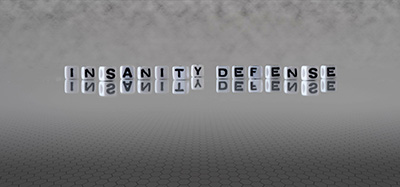 The insanity defense is one of the most intriguing and misunderstood aspects of criminal law. Often sensationalized by media portrayals and popular culture, the concept of insanity as a legal defense raises numerous questions about its validity, implications, and effectiveness in the courtroom. In this blog post, we’ll delve into the intricacies of the insanity defense, dispel common misconceptions, and explore the legal standards associated with its application.
The insanity defense is one of the most intriguing and misunderstood aspects of criminal law. Often sensationalized by media portrayals and popular culture, the concept of insanity as a legal defense raises numerous questions about its validity, implications, and effectiveness in the courtroom. In this blog post, we’ll delve into the intricacies of the insanity defense, dispel common misconceptions, and explore the legal standards associated with its application.
What is the Insanity Defense?
The insanity defense is a legal strategy employed by defendants in criminal cases to argue that they should not be held criminally responsible for their actions due to a mental illness or defect at the time of the offense. The fundamental premise behind the insanity defense is that individuals who are unable to appreciate the nature or wrongfulness of their conduct should not be held accountable in the same manner as mentally competent individuals.
Misconceptions Surrounding the Insanity Defense
- It’s an Easy Way Out: One of the most prevalent misconceptions about the insanity defense is that it’s a guaranteed ticket to avoid criminal responsibility. In reality, successfully invoking the insanity defense is exceedingly rare and requires substantial evidence demonstrating severe mental impairment at the time of the offense.
- It Leads to Instant Release: Another misconception is that individuals found not guilty by reason of insanity (NGRI) are immediately released back into society. In truth, individuals acquitted by reason of insanity often face lengthy psychiatric evaluations and may be committed to mental health facilities for treatment and supervision.
- It’s Used Frequently: Contrary to popular belief, the insanity defense is invoked in only a small fraction of criminal cases, and successful outcomes are even rarer. Most criminal defendants opt for other defense strategies due to the high burden of proof and stigma associated with the insanity defense.
Legal Standards for the Insanity Defense
The legal standards for the insanity defense vary by jurisdiction but generally revolve around two main approaches:
- M’Naghten Rule: Named after the landmark case of Daniel M’Naghten in 1843, the M’Naghten Rule focuses on whether the defendant knew the nature and quality of their actions or understood that their actions were wrong at the time of the offense. This standard emphasizes cognitive impairment and lacks a consideration of volitional control.
- Irresistible Impulse Test: Some jurisdictions recognize the irresistible impulse test, which extends the M’Naghten Rule by considering whether the defendant had the capacity to control their actions due to mental illness, even if they understood that their actions were wrong.
It’s important to note that the burden of proving insanity typically rests with the defendant, requiring clear and convincing evidence of mental impairment. Expert testimony from psychiatrists and psychologists often plays a crucial role in establishing the defendant’s mental state at the time of the offense.
Conclusion
The insanity defense remains a complex and controversial aspect of criminal law, challenging our understanding of culpability and accountability in cases involving mental illness. While misconceptions abound, the reality is that successful insanity defenses are rare and subject to stringent legal standards. By exploring the nuances of the insanity defense and debunking common myths, we gain a clearer understanding of its role within the criminal justice system and its implications for defendants and society as a whole.
Alexander Truluck focuses his practice as a criminal defense attorney in Clearwater, Palm Harbor, Largo, Dunedin and the Tampa Bay area.
For more information, visit our website at http://www.criminallawyerclearwaterflorida.com
or call (727) 799-3550.
